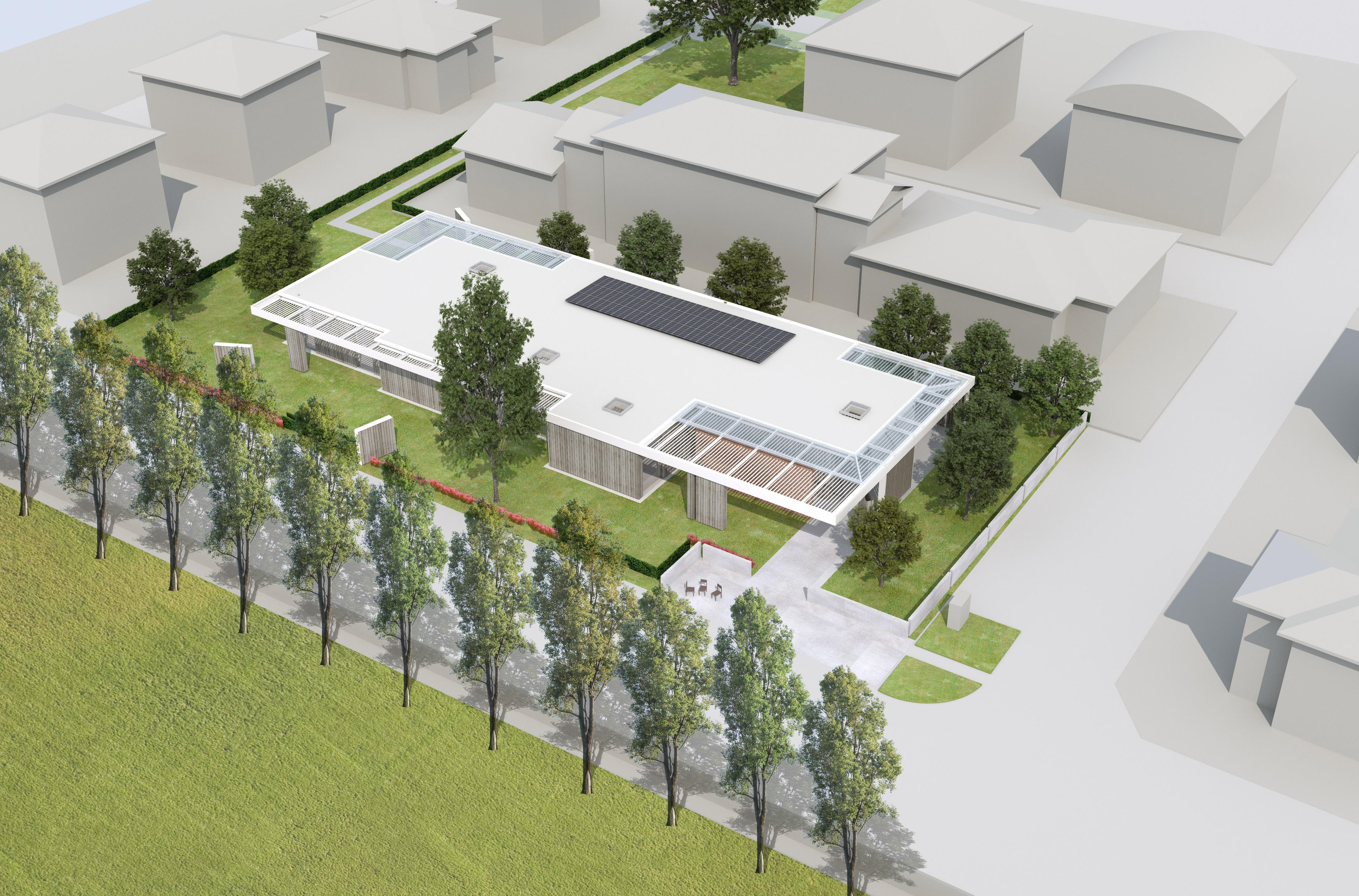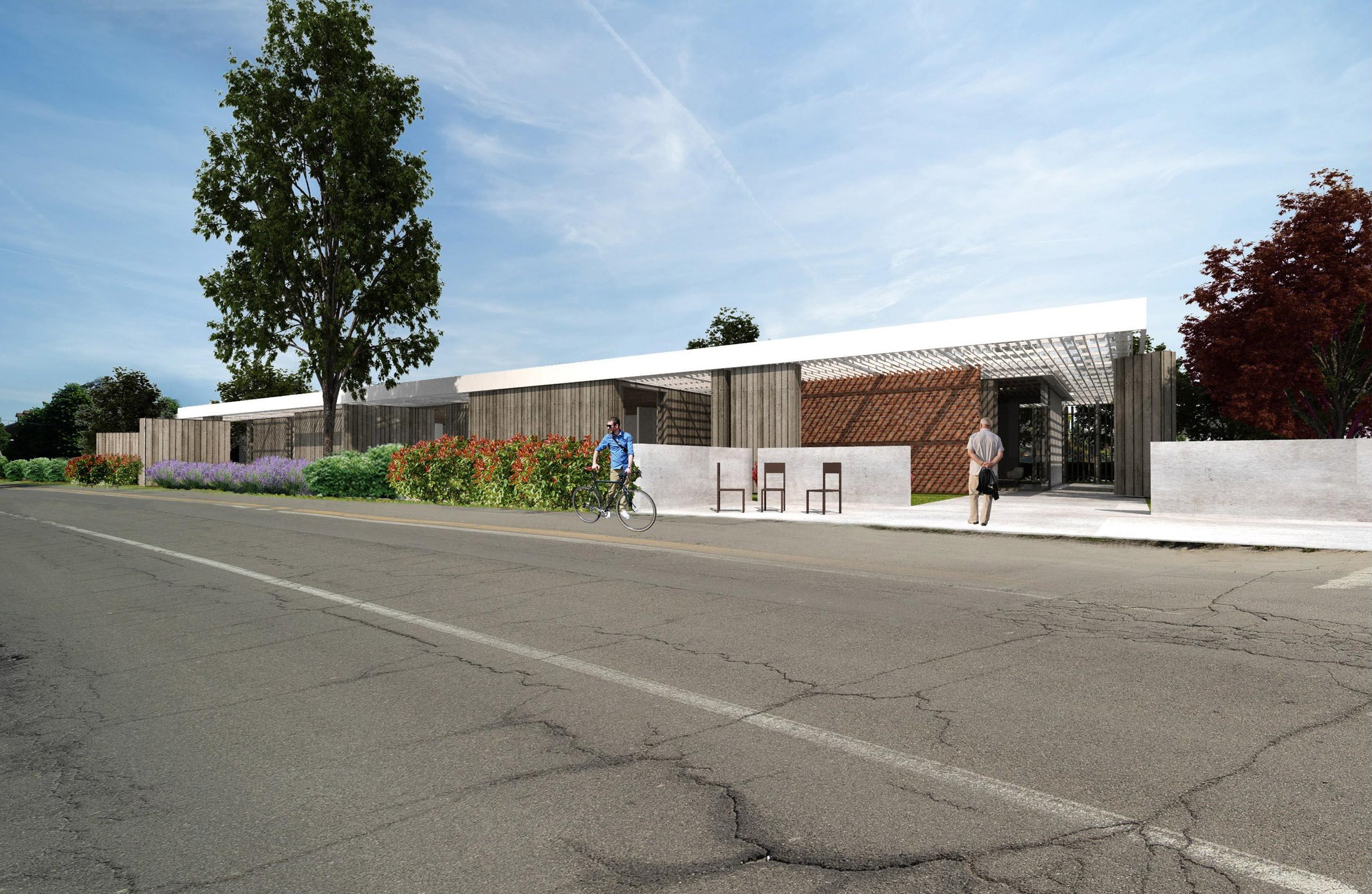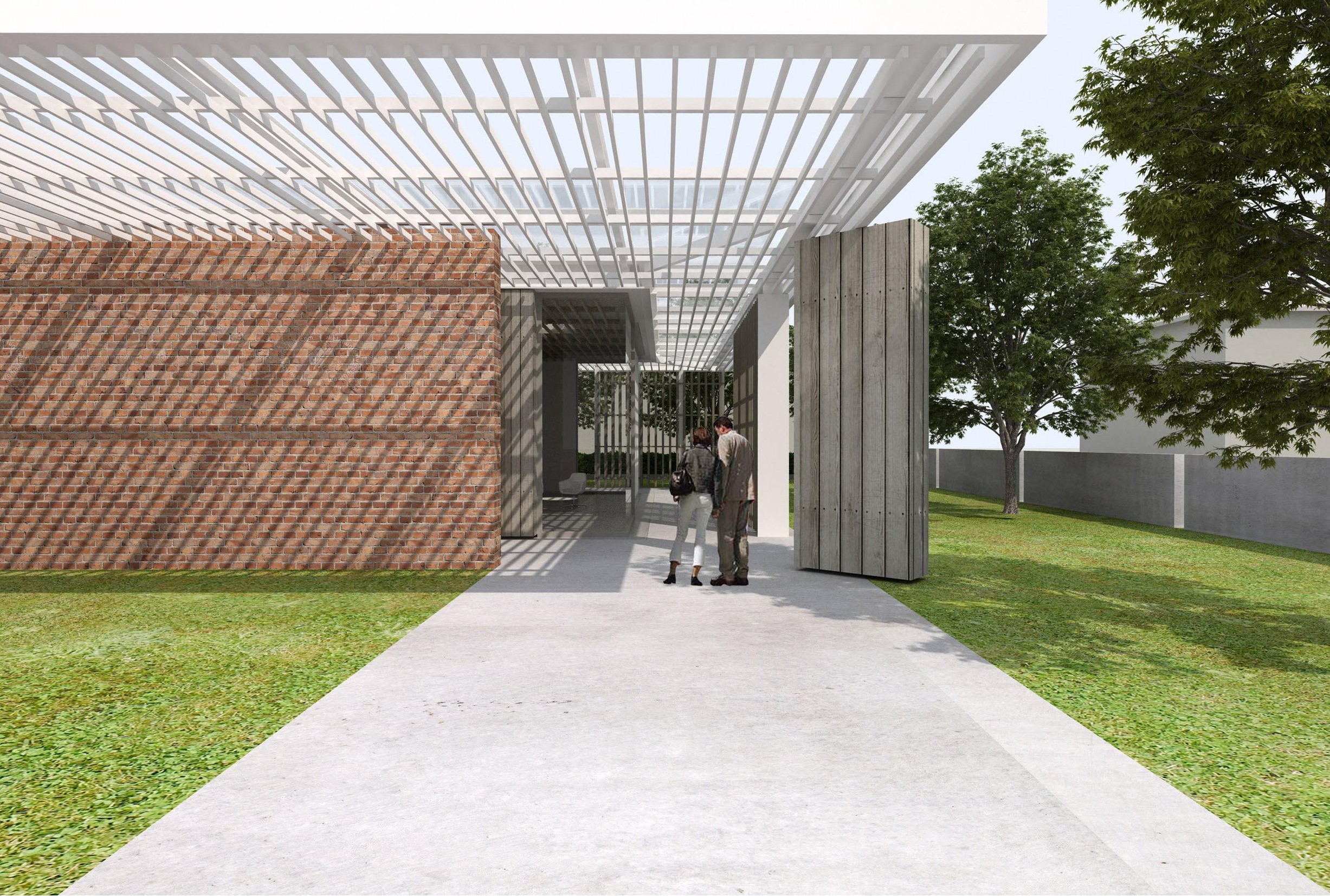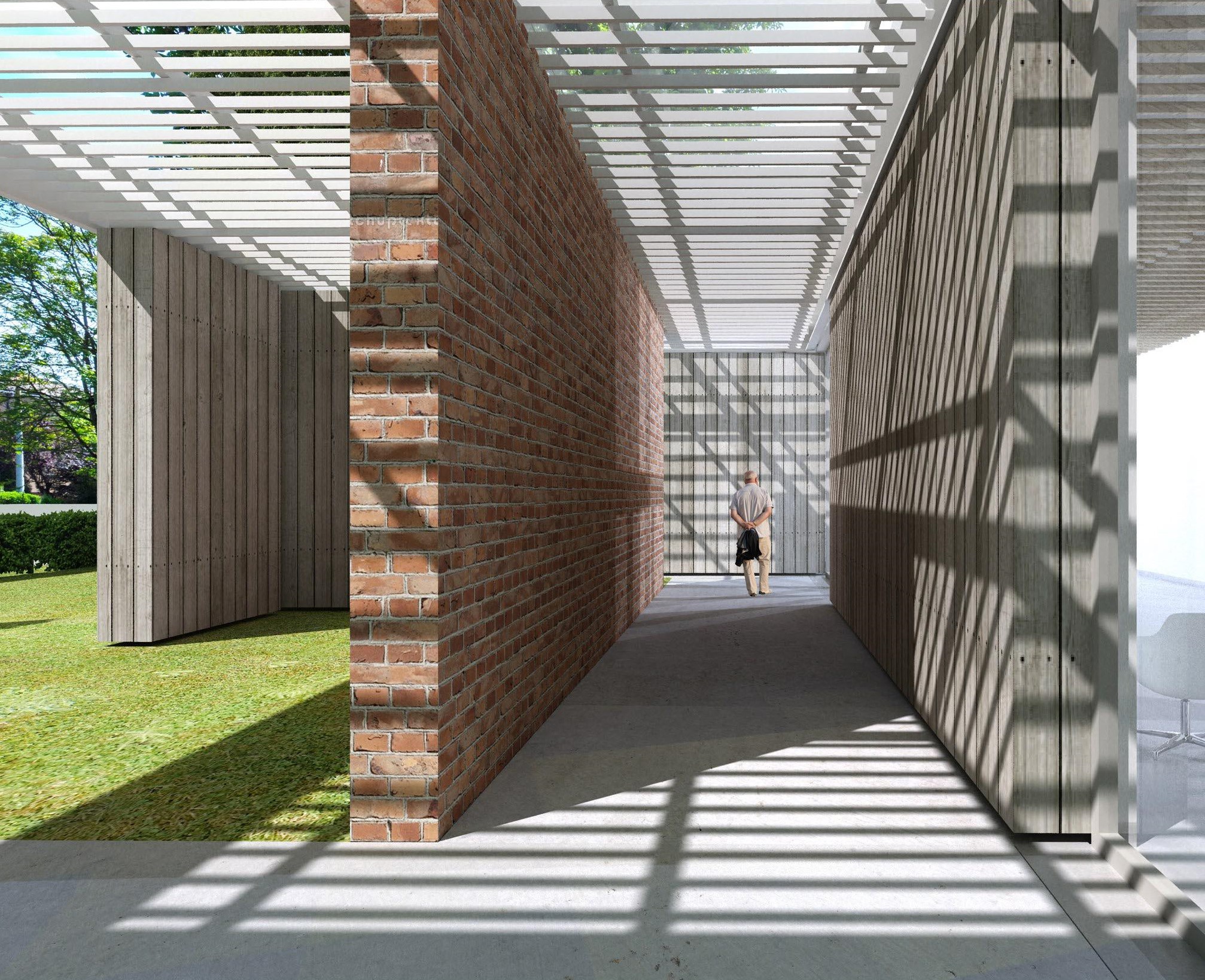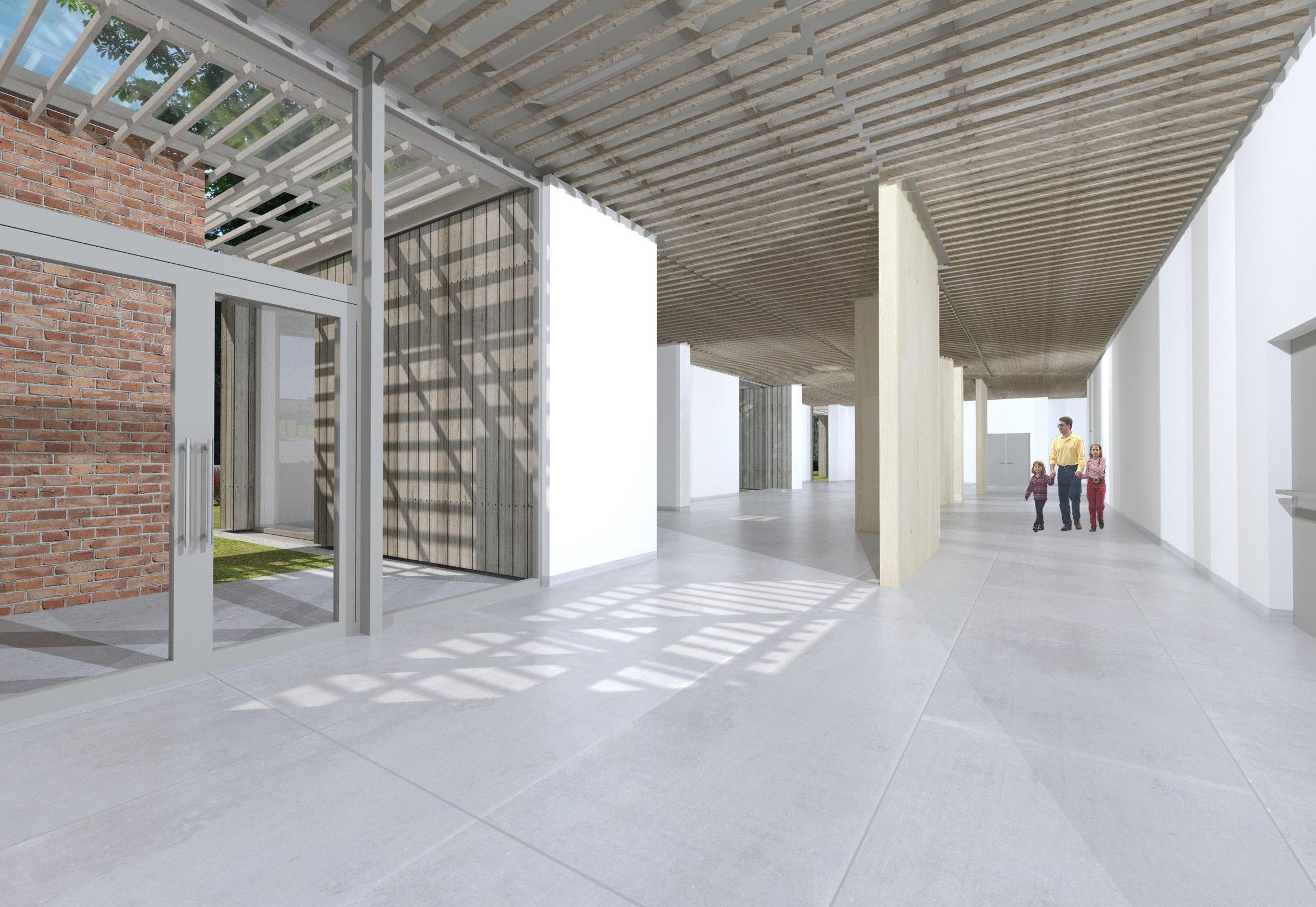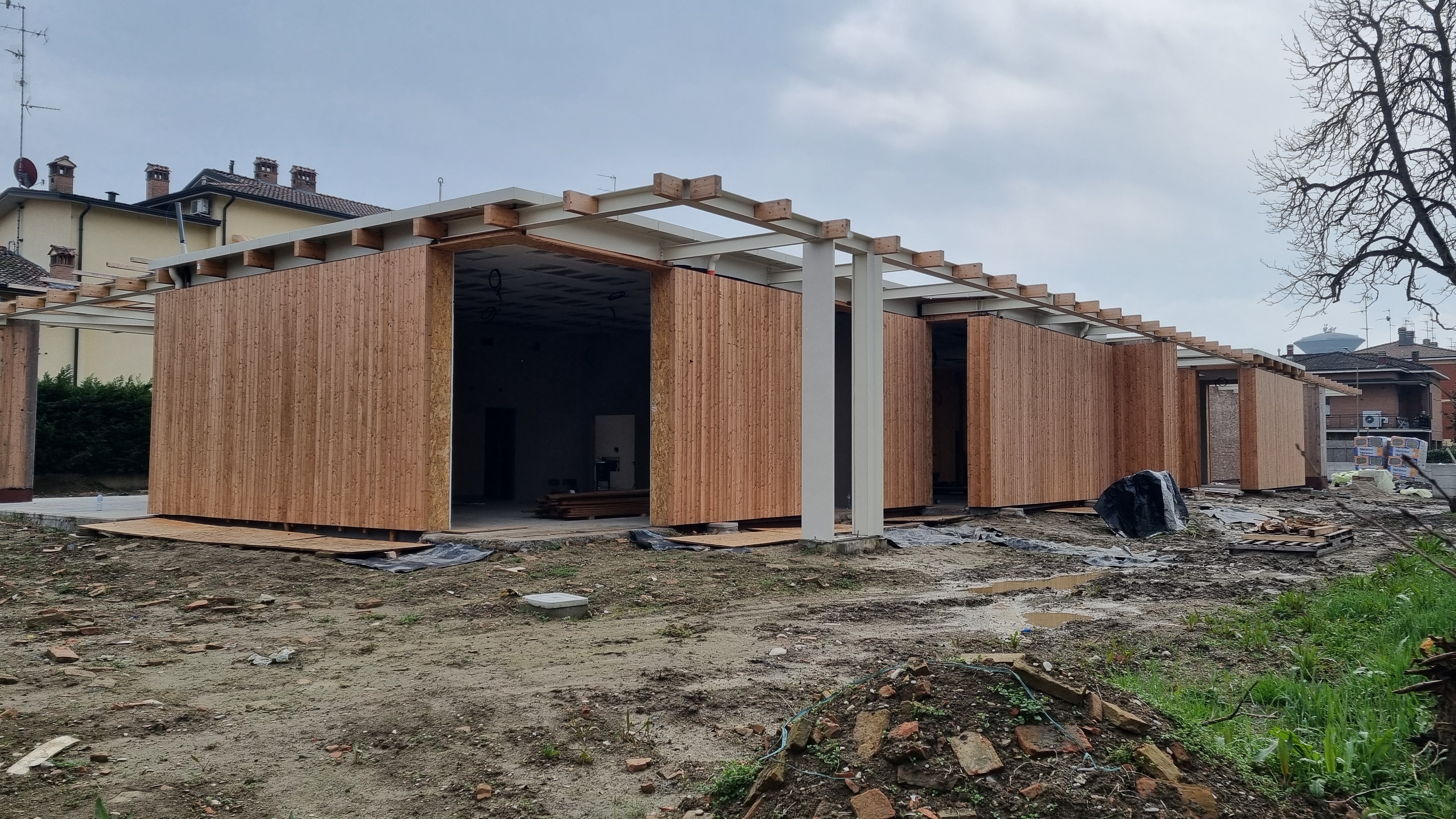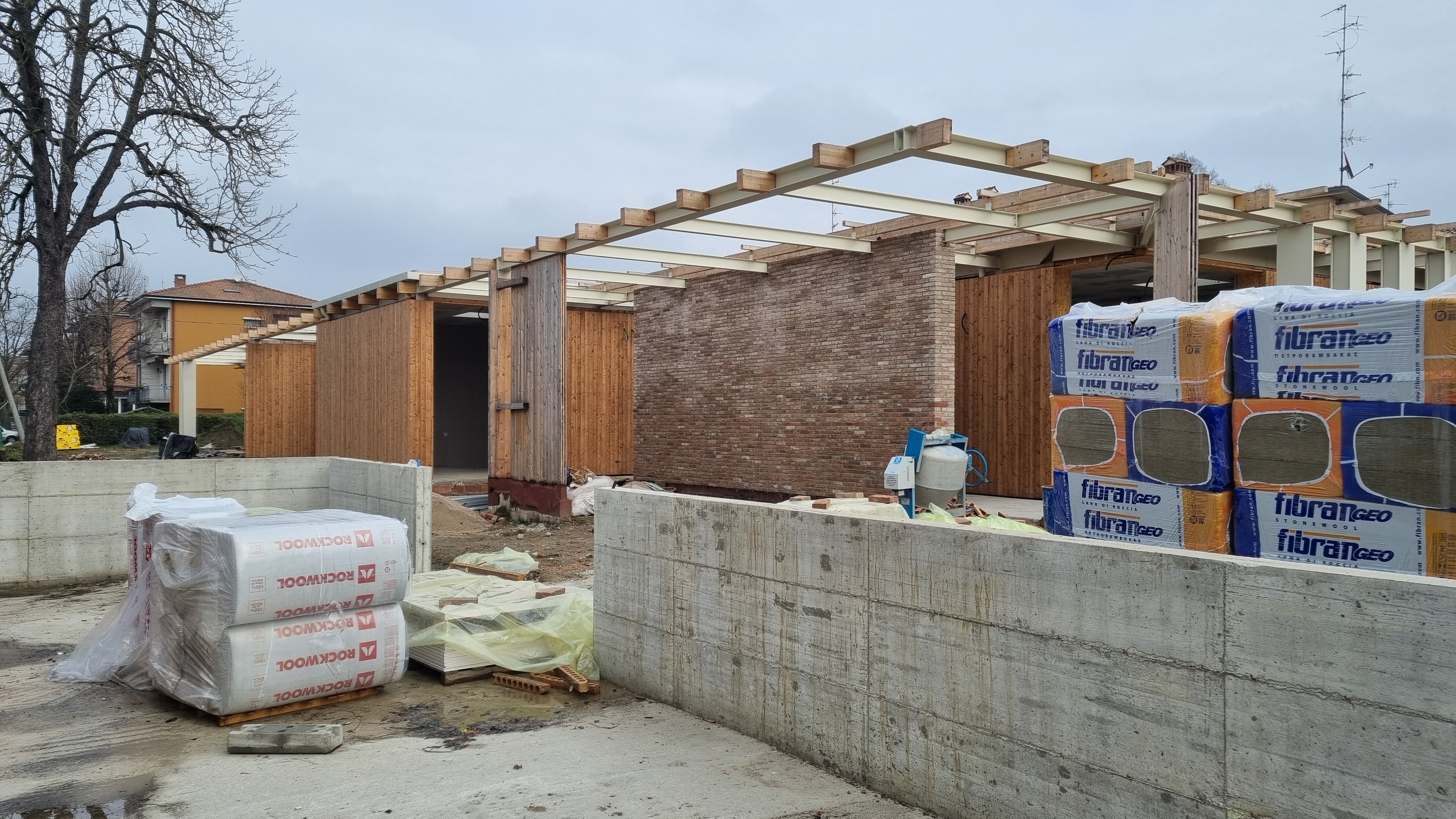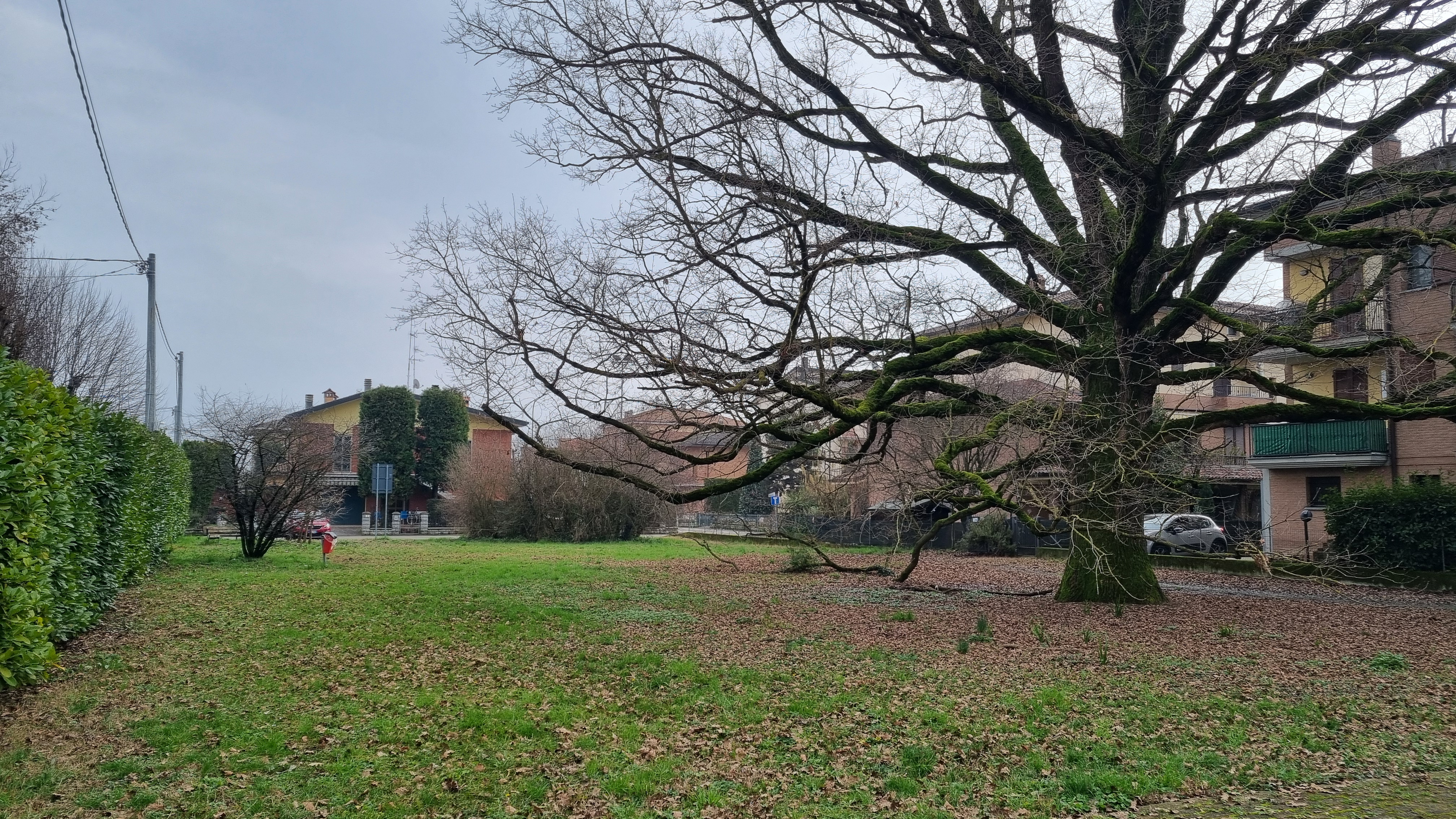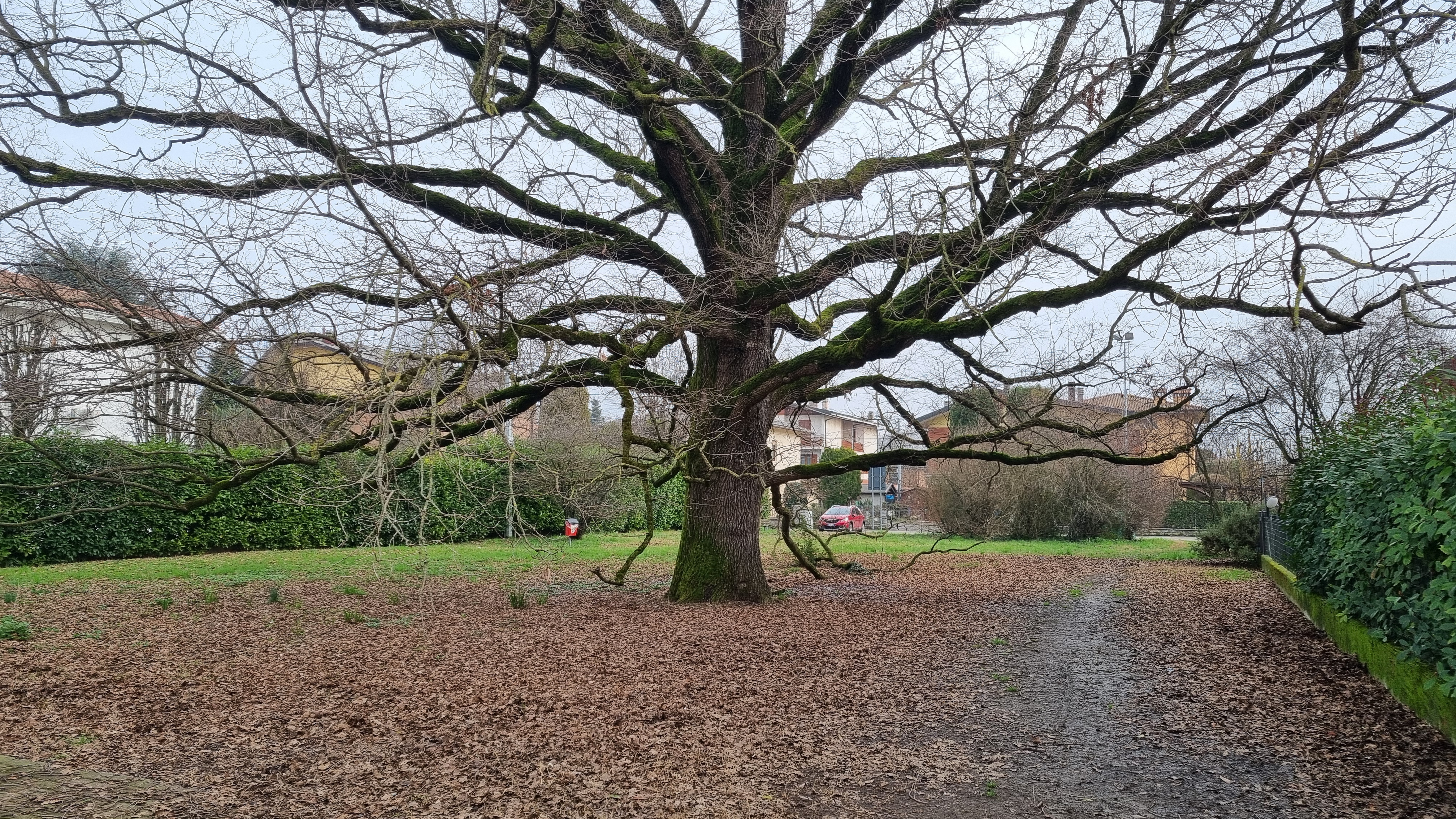The Garden of Welcoming
Davanti a Villa Emma. The Garden of Welcoming
The creation of a community garden in the outdoor area of the memorial site “Davanti a Villa Emma” devoted to the memory of the 73 young Jewish refugees welcomed and rescued in Nonantola in 1942-43.
Italy
Via Mavora 39
Nonantola (MO)
Italy
Nonantola (MO)
Italy
Prototype level
Yes
Yes
Yes
No
No
036027: Nonantola (IT)
The project envisages the renovation of the area outside the memorial site “Davanti a Villa Emma” - dedicated to the story of the 73 young Jewish refugees welcomed and rescued in Nonantola during World War II - with the purpose of creating a community garden and enhancing the area where the building is located. Prato Galli is located in a crucial and highly symbolic spot: on one side it faces Villa Emma, the main memorial scene; on the other side, it represents (and it was, at the time of the facts we want to narrate) a place of transit from the historical mansion and the village center. The area was, in a sense, a meeting point for the two communities, and it allowed the coming and going from the village to the Villa. Moreover, during the stay of the Jewish refugees in Nonantola, it has progressively accompanied the acquaintance between the two worlds (that of the strangers, and that of the locals), and witnessed the birth and reinforcing of friendships and habits. Right here, in the symbolic density of the Nonantola landscape, we want to narrate that meeting, and create a place for that story. Continuing in the wake of the historical memory of the place, the garden is meant to be a gathering place that will promote the meeting between the different players of the community (schools, families, the elderly, young people, foreigners), encouraging the sense of being part of a territory. Moreover, the garden will host an outdoor educational space in which children and youth can learn through observation and experimentation, raising awareness about the need to create greener and more sustainable cities. The implementation of the project will allow a more significant access to the historical, cultural, and natural heritage of the Nonantola area. Moreover, the intervention will also increase the number of public parks available to the citizens, thus improving people's quality of life.
Memory
Community
Partecipation
Outdoor Education
Landscape Architecture
The project aims to reduce the environmental impact of human activities that will take place within the memorial site “Davanti a Villa Emma” and to create a space that can facilitate the contact between people and nature, promoting the psycho-physical well-being of citizens. The planting of trees and shrubs in the area is also aimed at mitigating the visual impact of the buildings on the border and, from a bioclimatic point of view, improving the microclimate through the evapotranspiration produced by the plants, regulating the summer heat peaks. The planting of trees to the southeast of the building will also contribute to the shading and filtering of direct sunlight in front of the windows located on the south and east sides.
The two trees currently in the area - a horse chestnut tree along Mavora Street and a century-old oak located in the lawn on Rossini Street - will be flanked by rustic and easy-to-maintain trees, such as Acer campestre (maple), Prunus cerasifera pissardii (red plum) and Arbutus unedo (strawberry tree). The perimeter of the parcel along Mavora Street will be bordered by hedges of Photinia serrulata (photinia), Cornus sanguinea (dogwood), Lavandula spica (lavender) and Viburnum opulus (viburnum). The same plants, chosen from the list of “Specie arboree ed arbustive consigliate per il Comune di Nonantola” (Recommended tree and shrub species for the city of Nonantola), will also be used to create hedges and shrub areas within the garden.
The outdoor areas will largely be treated with permeable materials: the pedestrian paths inside the garden will be made of limestone (stabilized quarry mix) with a non-slip surface. Much of the outdoor area will be made of low-maintenance green lawn and flower meadow, which can attract pollinating insects (bees, butterflies, beetles), thus preserving the biodiversity of the area.
The two trees currently in the area - a horse chestnut tree along Mavora Street and a century-old oak located in the lawn on Rossini Street - will be flanked by rustic and easy-to-maintain trees, such as Acer campestre (maple), Prunus cerasifera pissardii (red plum) and Arbutus unedo (strawberry tree). The perimeter of the parcel along Mavora Street will be bordered by hedges of Photinia serrulata (photinia), Cornus sanguinea (dogwood), Lavandula spica (lavender) and Viburnum opulus (viburnum). The same plants, chosen from the list of “Specie arboree ed arbustive consigliate per il Comune di Nonantola” (Recommended tree and shrub species for the city of Nonantola), will also be used to create hedges and shrub areas within the garden.
The outdoor areas will largely be treated with permeable materials: the pedestrian paths inside the garden will be made of limestone (stabilized quarry mix) with a non-slip surface. Much of the outdoor area will be made of low-maintenance green lawn and flower meadow, which can attract pollinating insects (bees, butterflies, beetles), thus preserving the biodiversity of the area.
The garden will be developed along the outer perimeter of the memorial site “Davanti a Villa Emma”: the building will be on one floor, so as to leave as free as possible the traversing view, from the existing buildings, towards the Fossa Signora canal and the Villa Emma park. The project will therefore emphasize visual and volumetric continuity with respect to the existing urban structure. The borders on the east and south sides will be emphasized by medium/low trees and shrubs. The architectural intervention, moreover, is specifically designed to blend in with the surrounding landscape: the wooden walls and glazed surfaces, which define the building exterior, push outward and support the flat roof dotted with a few skylights.
In addition, the project includes the creation of an artistic itinerary, marked by small chairs, the ultimate welcome and hospitality symbol. The bronze-cast chairs will be placed near some landmarks of the story. Their purpose is to highlight the strong existing relation between the main memorial scene, placed in front of the place where the story took place, the historic center of Nonantola, and its immediate outskirts. In turn, those places represent the poles around which it was organized welcoming, friendship between the persecuted and the locals, and the final rescue of the group.
Conceived as an extension of the building, the outdoor area will strengthen the knowledge of heritage - cultural and natural - and the recognition of the relationship between history and memory: the ultimate goal is to develop an attitude of care towards this heritage, thanks to the possibility of establishing a meaningful relationship with the society, that can only reinforce democracy and human rights. The creation of a community garden will also allow the Prato Galli area to be configured as a place of encounter and dialogue between people of different ages, geographical backgrounds and cultural traditions, then as now.
In addition, the project includes the creation of an artistic itinerary, marked by small chairs, the ultimate welcome and hospitality symbol. The bronze-cast chairs will be placed near some landmarks of the story. Their purpose is to highlight the strong existing relation between the main memorial scene, placed in front of the place where the story took place, the historic center of Nonantola, and its immediate outskirts. In turn, those places represent the poles around which it was organized welcoming, friendship between the persecuted and the locals, and the final rescue of the group.
Conceived as an extension of the building, the outdoor area will strengthen the knowledge of heritage - cultural and natural - and the recognition of the relationship between history and memory: the ultimate goal is to develop an attitude of care towards this heritage, thanks to the possibility of establishing a meaningful relationship with the society, that can only reinforce democracy and human rights. The creation of a community garden will also allow the Prato Galli area to be configured as a place of encounter and dialogue between people of different ages, geographical backgrounds and cultural traditions, then as now.
The project aims to create a route that ensures maximum inclusion, through solutions that allow full use even for users with mobility disabilities. The new memorial site is, in fact, designed in compliance with current regulations for overcoming architectural barriers and allows accessibility by users with disabilities. The paths are all accessible and with height differences that, if greater than 2 cm, are overcome through the construction of connecting ramps with a slope of no more than 8%. The perimeter paths to the building and the walkways within the garden are free of obstacles and with dimensions suitable for easy flow and change of direction by the disabled person. Two parking spaces have been provided for people with disabilities, including one along the main access road to the area (Mavora Street).
At the time of the story of the young Jewish refugees welcomed in Nonantola during World War II, the area was somehow part of the habits of the two communities - that of locals and that of foreigners - allowing the progressive acquaintance of the two worlds and facilitating the consolidation of friendships and customs. Similarly, the garden we intend to create at Prato Galli aims to be a place of aggregation open to the local community: in fact, we propose to entrust the management and maintenance of the garden to voluntary associations and groups of citizens interested in promoting environmental protection, and to create an outdoor educational space where students and families can learn through observation, experimentation and direct contact with nature, thus promoting social interaction and intergenerational exchanges.
At the time of the story of the young Jewish refugees welcomed in Nonantola during World War II, the area was somehow part of the habits of the two communities - that of locals and that of foreigners - allowing the progressive acquaintance of the two worlds and facilitating the consolidation of friendships and customs. Similarly, the garden we intend to create at Prato Galli aims to be a place of aggregation open to the local community: in fact, we propose to entrust the management and maintenance of the garden to voluntary associations and groups of citizens interested in promoting environmental protection, and to create an outdoor educational space where students and families can learn through observation, experimentation and direct contact with nature, thus promoting social interaction and intergenerational exchanges.
During 2024, the Villa Emma Foundation - the lead institution of the project for the construction of the memorial site “Davanti a Villa Emma” - started a participatory process with the aim of involving in the cultural and scientific discussion, related to the project, the community of Nonantola and some institutional referents. On the one hand, this iter aims to promote a wide participation in the definition of the project, and on the other to continue the work of constant dialogue already started successfully in the past years through public meetings and seminars. The participatory sessions were attended by various figures: teachers and students, professionals engaged in the various fields of activity, researchers, scholars, representatives of the local community (associations and volunteers, local administrators), representatives of the reference institutions and other museum organizations.
The program aimed to fuel a public discussion on the main objectives of the project and on the relationships between memory, landscape and its community of reference, adopting participatory methods capable of involving groups of citizens engaged, at various levels, in the enhancement and protection of the cultural and landscape heritage. Thanks to the discussions started during the meetings organized by the Villa Emma Foundation, it has also been possible to activate collaborations with citizens who are experts in agronomy and entomology, able to cooperate with the designers in the selection of tree, shrub and flower species to be included in the garden, which can integrate into the surrounding countryside and attract pollinating insects, thus promoting biodiversity and providing a safe shelter for multiple animal species.
The program aimed to fuel a public discussion on the main objectives of the project and on the relationships between memory, landscape and its community of reference, adopting participatory methods capable of involving groups of citizens engaged, at various levels, in the enhancement and protection of the cultural and landscape heritage. Thanks to the discussions started during the meetings organized by the Villa Emma Foundation, it has also been possible to activate collaborations with citizens who are experts in agronomy and entomology, able to cooperate with the designers in the selection of tree, shrub and flower species to be included in the garden, which can integrate into the surrounding countryside and attract pollinating insects, thus promoting biodiversity and providing a safe shelter for multiple animal species.
The stakeholders involved in the project include, first of all, the Villa Emma Foundation: starting from the heritage of memory and solidarity action related to the story of the 73 young Jewish refugees, it promotes historical research, meetings with schools, educational activities and cultural initiatives, also reflecting on the condition of childhood in war. The project to create a community garden starts from the collaboration between the Villa Emma Foundation and the CEAS (Sustainability Education Center) of the Municipality of Nonantola, with the aim of creating a space within the city, where to implement activities designed to enhance both cultural and natural heritage.
The project also includes the involvement of local institutions committed to environmental protection projects, such as the Partecipanza Agraria di Nonantola, a form of collective land ownership that has its roots in medieval times and a recognized institution since 1894. Between the 1980s and 1990s, anticipating a mentality of environmental protection that is increasingly widespread today, the Partecipanza Agraria - in collaboration with the municipal authority - created a vast area of ecological restoration - the Torrazzuolo Oasis - by planting more than 50,000 indigenous plants and creating an important area for wildlife repopulation.
Another privileged stakeholder in the participatory process is then the world of education, the main target of the activities that will be carried out within the area that is the subject of the intervention. The participation process has involved teachers and students from schools in the local area, together with former teachers from the Istituto Tecnico Agrario (Agricultural Technical Institute) Lazzaro Spallanzani in Castelfranco Emilia (Modena), as well as members of local associations involved in environmental protection.
The project also includes the involvement of local institutions committed to environmental protection projects, such as the Partecipanza Agraria di Nonantola, a form of collective land ownership that has its roots in medieval times and a recognized institution since 1894. Between the 1980s and 1990s, anticipating a mentality of environmental protection that is increasingly widespread today, the Partecipanza Agraria - in collaboration with the municipal authority - created a vast area of ecological restoration - the Torrazzuolo Oasis - by planting more than 50,000 indigenous plants and creating an important area for wildlife repopulation.
Another privileged stakeholder in the participatory process is then the world of education, the main target of the activities that will be carried out within the area that is the subject of the intervention. The participation process has involved teachers and students from schools in the local area, together with former teachers from the Istituto Tecnico Agrario (Agricultural Technical Institute) Lazzaro Spallanzani in Castelfranco Emilia (Modena), as well as members of local associations involved in environmental protection.
The first discipline on which the realization of the project has been based is certainly the landscape architecture: the design of the external area, entrusted to the studio Bianchini&Lusiardi of Cremona, has been carried out in compliance with the principles of landscape compatibility with regard to the morphology of the site, the volumetric insertion of the building in the surrounding space and the relation of the area to the cultural, historical and agricultural structure of the territory. In addition, with regard to the selection of materials and the external surface treatment, great attention has been paid to the creation of large permeable areas that promote the infiltration of rainwater into the soils, reducing surface runoff.
The participatory process allowed other specific areas of knowledge, such as agronomy, entomology, and botany, to be included within the architectural design. Agro-technical experts were involved in the selection of tree and shrub species to be included in the garden, respecting the natural ecosystem within which the project fits. In addition, thanks to the collaboration with the Partecipanza Agraria di Nonantola, a low-maintenance flower meadow was chosen, selecting flower varieties capable of attracting pollinating insects, thus promoting the development of biodiversity.
Essential, too, was the collaboration between the CEAS (Sustainability Education Center) of the Municipality of Nonantola and the Villa Emma Foundation, which made it possible to include the principles of environmental education in the larger educational project of the memorial site “Davanti a Villa Emma,” geared toward the fight against all forms of racism, the promotion and defense of citizenship rights and the activation of workshops for the exploration of new ways of coexistence and dialogue.
The participatory process allowed other specific areas of knowledge, such as agronomy, entomology, and botany, to be included within the architectural design. Agro-technical experts were involved in the selection of tree and shrub species to be included in the garden, respecting the natural ecosystem within which the project fits. In addition, thanks to the collaboration with the Partecipanza Agraria di Nonantola, a low-maintenance flower meadow was chosen, selecting flower varieties capable of attracting pollinating insects, thus promoting the development of biodiversity.
Essential, too, was the collaboration between the CEAS (Sustainability Education Center) of the Municipality of Nonantola and the Villa Emma Foundation, which made it possible to include the principles of environmental education in the larger educational project of the memorial site “Davanti a Villa Emma,” geared toward the fight against all forms of racism, the promotion and defense of citizenship rights and the activation of workshops for the exploration of new ways of coexistence and dialogue.
The innovative character of the project lies mainly in the idea of combining educational activities on historical and cultural themes with environmental education, as objectives of a single educational project that enhances both the historical-memorial and the natural heritage of the area. In this way, the two spaces created within the same urban area - the memorial building dedicated to the story of the 73 young refugees fleeing persecution and the community garden created in the outdoor area - are not conceived as two separate realities, but interact within the same line of communication having as its ultimate goal the promotion of a culture of coexistence and dialogue.
In addition, the memorial complex “Davanti a Villa Emma” - which also includes the outdoor area targeted by the intervention - has two further elements of innovation. On the one hand, in the activities promoted by the other places of memory, as well as at school, often - when dealing with the Second World War - the issue of the victims is brought to the forefront: there is now a codified narrative of the horrors of the Holocaust, with countless examples of installations and practices aimed at the educational side: it is different to design a space dedicated to the narration of an episode of salvation, such as that of Villa Emma. On the other hand, this is a complex built in accordance with the principles of energy efficiency and emission reduction, also thanks to the photovoltaic panels placed on the building's flat roof, the predilection for natural lighting, and the use of mechanical ventilation with thermal recycling.
At the local area level, moreover, this is one of the first projects in which a wide-ranging participatory method was tested through meetings and discussions with stakeholders and members of the community within which the project is located.
In addition, the memorial complex “Davanti a Villa Emma” - which also includes the outdoor area targeted by the intervention - has two further elements of innovation. On the one hand, in the activities promoted by the other places of memory, as well as at school, often - when dealing with the Second World War - the issue of the victims is brought to the forefront: there is now a codified narrative of the horrors of the Holocaust, with countless examples of installations and practices aimed at the educational side: it is different to design a space dedicated to the narration of an episode of salvation, such as that of Villa Emma. On the other hand, this is a complex built in accordance with the principles of energy efficiency and emission reduction, also thanks to the photovoltaic panels placed on the building's flat roof, the predilection for natural lighting, and the use of mechanical ventilation with thermal recycling.
At the local area level, moreover, this is one of the first projects in which a wide-ranging participatory method was tested through meetings and discussions with stakeholders and members of the community within which the project is located.
The project involves the creation of a community garden in the outdoor area of the memorial site “Davanti a Villa Emma,” collectively involving the main stakeholders (schools, citizens, associations and institutions) in the decision-making processes and the main stages of development. The garden is configured as a meeting and gathering place for citizens and it’s based on the principle that interaction with nature reduces anxiety, promotes socialization and stimulates creativity, improving emotional and mental well-being. In addition, direct contact with nature raises citizens' awareness of the importance of environmental protection and helps them to develop ecological awareness with a view to citizenship education and respect for shared spaces. In this way, the project is meant to be an extension of the educational project carried out within the memorial site.
Moreover, the garden will host an outdoor educational space in which children and youth can learn through observation and experimentation: the park will be configured as an open-air workshop, offering opportunities to develop curiosity, creativity and soft skills, fostering an educational experience that promotes psychophysical well-being and a deep connection with the environment. Outdoor education, integrated with the historical and natural context of the memorial complex, will allow young users to explore, observe and understand the world around them through a learning methodology based on direct and collective experience: children will be able to develop cognitive, motor, historical-cultural and social skills and grow as conscious and responsible citizens, learning to respect nature and face the challenges of the modern world.
Moreover, the garden will host an outdoor educational space in which children and youth can learn through observation and experimentation: the park will be configured as an open-air workshop, offering opportunities to develop curiosity, creativity and soft skills, fostering an educational experience that promotes psychophysical well-being and a deep connection with the environment. Outdoor education, integrated with the historical and natural context of the memorial complex, will allow young users to explore, observe and understand the world around them through a learning methodology based on direct and collective experience: children will be able to develop cognitive, motor, historical-cultural and social skills and grow as conscious and responsible citizens, learning to respect nature and face the challenges of the modern world.
The garden project can serve as an example for other urban areas, showing how green solutions can be integrated even in highly built-up settings. Through sustainable landscape architecture practices, such as the use of native plants, drip irrigation, and the use of eco-friendly materials, the garden will become an example of how it is possible to coexist with nature, reduce energy consumption, and promote sustainability even in an urban context. Creating and preserving green spaces in cities is a key step in building a more resilient future in harmony with the environment.
Furthermore, we believe that the coexistence of cultural-historical and environmental education projects can be replicated in other urban contexts, such as museums, libraries, and other cultural venues. In this sense, too, the participation of those involved in the activities that will be carried out there and of the stakeholders (users, schools, families) is essential to make sure that the project is carried out taking into account the specific needs of the community in which it is located or implemented.
Global challenges related to climate and geo-political changes require concrete and local solutions. In this perspective, our community garden stands as an opportunity to contribute to people's growth and well-being by raising awareness of the importance of sustainability and dialogue among future generations.
Furthermore, we believe that the coexistence of cultural-historical and environmental education projects can be replicated in other urban contexts, such as museums, libraries, and other cultural venues. In this sense, too, the participation of those involved in the activities that will be carried out there and of the stakeholders (users, schools, families) is essential to make sure that the project is carried out taking into account the specific needs of the community in which it is located or implemented.
Global challenges related to climate and geo-political changes require concrete and local solutions. In this perspective, our community garden stands as an opportunity to contribute to people's growth and well-being by raising awareness of the importance of sustainability and dialogue among future generations.
Climate change is intensifying the effects of urban heat-islands, a phenomenon that leads to much higher temperatures in built-up areas than in surrounding natural contexts. By creating a green area that enhances the growth of trees, plants and other forms of vegetation, the effect of asphalt and concrete can be reduced, improving the urban microclimate and air quality. The shade provided by plants lowers the air temperature, reducing direct exposure to the sun and the risk of overheating. In addition, the garden becomes an opportunity to increase biodiversity in urban areas: parks and gardens, in fact, create natural habitats for various species of flora and fauna, which contribute to keeping the city ecosystem well balanced.
Parks have a positive impact on people's mental and physical well-being, reducing stress and improving quality of life. A community garden will provide not only an area where people can escape from urban chaos, but also a space where they can relax and restore themselves: studies have demonstrated that exposure to nature reduces anxiety levels and improves mood, contributing to community health.
Together with the memorial site “Davanti a Villa Emma,” the garden will be the location of educational workshops and activities dedicated to the study of historical, memorial and environmental heritage: inside the building, students and citizens will be able to learn more about the story of the young Jewish refugees welcomed and rescued by the local population during World War II, while the outdoor area will be able to host educational tours and practical activities that will raise awareness among the younger generation about the need to create greener and more sustainable cities. In this way, the garden will become not only an example of urban sustainability, but also a model of peace and solidarity education.
Parks have a positive impact on people's mental and physical well-being, reducing stress and improving quality of life. A community garden will provide not only an area where people can escape from urban chaos, but also a space where they can relax and restore themselves: studies have demonstrated that exposure to nature reduces anxiety levels and improves mood, contributing to community health.
Together with the memorial site “Davanti a Villa Emma,” the garden will be the location of educational workshops and activities dedicated to the study of historical, memorial and environmental heritage: inside the building, students and citizens will be able to learn more about the story of the young Jewish refugees welcomed and rescued by the local population during World War II, while the outdoor area will be able to host educational tours and practical activities that will raise awareness among the younger generation about the need to create greener and more sustainable cities. In this way, the garden will become not only an example of urban sustainability, but also a model of peace and solidarity education.
Within the community garden created in the outdoor area of the memorial site “Davanti a Villa Emma,” thanks to the collaboration between the CEAS (Sustainability Education Center) of the Municipality of Nonantola and the Villa Emma Foundation and the scientific support offered by professional educators and botanical experts, we intend to implement outdoor education activities targeted at families and students of local schools. The project involves the implementation of four itineraries: 1) a botany workshop in which children will learn to recognize and classify the plants in the garden through a playful-scientific and historical approach; 2) a sensory workshop, where through the tactile exploration of aromatic plants, flowers and other botanical species, children will be guided through a sensory experience that will help them to develop their perception of the natural world around them; 3) a sustainability education activity, which will involve young visitors in the maintenance of the garden, learning how to care for plants, respect biodiversity and understand the importance of sustainability; 4) a creativity and imagination workshop, during which children can create stories, scenarios and symbolic games using natural materials collected in the garden. Moreover, we have planned to implement two specific programs aimed at preschool children: the first dedicated to the exploration of the natural environment through the use of the five senses, with the aim of stimulating curiosity about the main mechanisms that regulate natural balances; the second focused on learning about the relation between biodiversity and the territory through the implementation of experiential activities based on creativity and multisensory.

